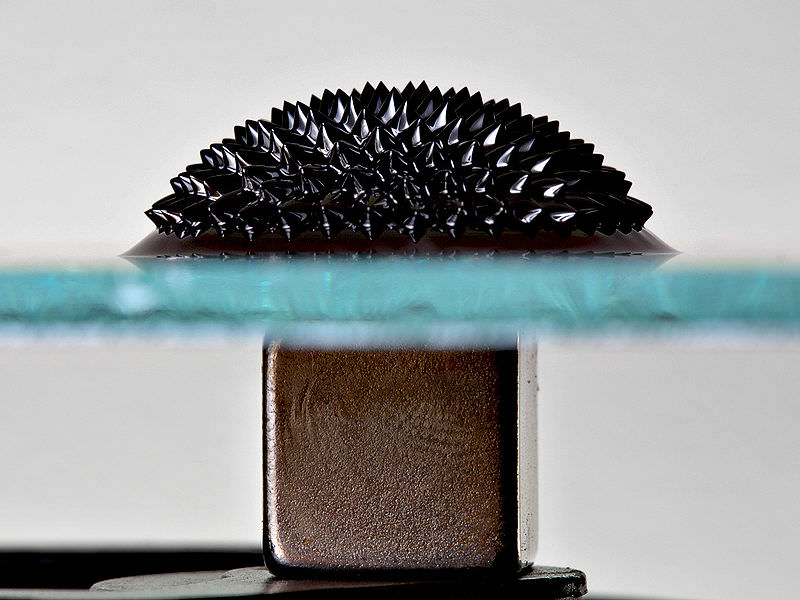[/caption]
Magnets are an endless source of fun, not to mention a convenience when it comes to fridge notes and white boards! But when it comes to industrial uses, such as those used by the air force and NASA, only one type of magnet makes the grade. These are called Rare Earth Magnets, a set of strong permanent magnets made from the alloys of particular earth elements. These elements fall into the category of rare earth elements (or metals), which are a collection of seventeen elements in the periodic table; namely scandium, yttrium, and the fifteen lanthanides. Despite their name, rare earth elements are actually quite abundant, but are so named because of their geochemical properties, they are rarely found in economically exploitable concentrations.
Rare earth elements are ferromagnetic, meaning that like iron, they can be magnetized. However, because most rare earth elements have low Curie temperatures (the temperature at which they exhibit magnetic properties), meaning they are only magnetic at low temperatures. However, most form compounds with transition metals like iron, nickel and cobalt, which have higher Curie temperatures, and can therefore be mixed with them to enhance their natural magnetic properties. There are two types: neodymium magnets and samarium-cobalt magnets. The former, invented in the 1980s, are the strongest and most affordable type of rare-earth magnet, is made of neodymium, iron and boron (chemical formula: Nd2Fe14B). On the other hand, Samarium-cobalt magnets (chemical formula: SmCo5), the first family of rare earth magnets invented, are less used than neodymium magnets because of their higher cost and weaker magnetic field strength. However, samarium-cobalt has a higher Curie temperature, creating a niche for these magnets in applications where high field strength is needed at higher operating temperatures.
Neodymium magnets are typically used in most computer hard drives and a variety of audio speakers. They are also have a number of important medical applications, not the least of which involves magnetic resonance imaging (or MRI) technology. They are also part of the driving mechanisms for electrical and hybrid motors, servomotors, cordless tools, and power steering controls. Samarium-cobalt motors are commonly used in the construction of electrical guitars, high-end Slotcar racing engines, and turbomachinery. In addition, rare earth elements are being used as a catalysts in the petroleum cracking industry and to make auto emissions equipment, and may have many future applications for green technology. Samarium-cobalt magnets may also be used in the making of cryogenic and high-temperature systems for future space travel.
Originally, the high cost of these magnets limited their use to applications requiring compactness together with high field strength, but beginning in the 1990s, rare earth magnets have become steadily less expensive, and the low cost has inspired new uses (such as magnetic toys for children).
We have written many articles about magnets for Universe Today. Here’s an article about where to buy magnets, and here’s an article about what magnets are made of.
If you’d like more info on Rare Earth Magnets, check out Rare Earth Magnetics Homepage, and here’s a link to Wikipedia: Rare Earth Magnets.
We’ve also recorded an entire episode of Astronomy Cast all about Magnetism. Listen here, Episode 42: Magnetism Everywhere.
Sources:
http://en.wikipedia.org/wiki/Rare_earth_element
http://en.wikipedia.org/wiki/Curie_temperature
http://blogs.wsj.com/chinarealtime/2010/11/02/video-how-a-rare-earth-magnet-works/
http://en.wikipedia.org/wiki/Rare-earth_magnet
http://en.wikipedia.org/wiki/Neodymium_magnet
http://en.wikipedia.org/wiki/Samarium-cobalt

